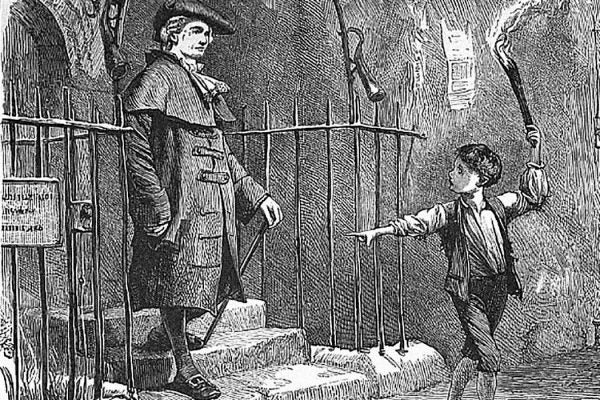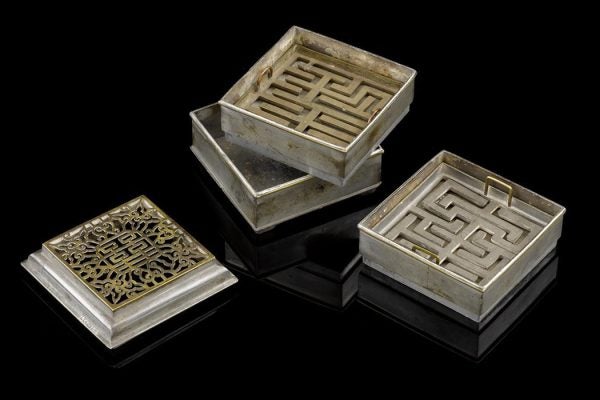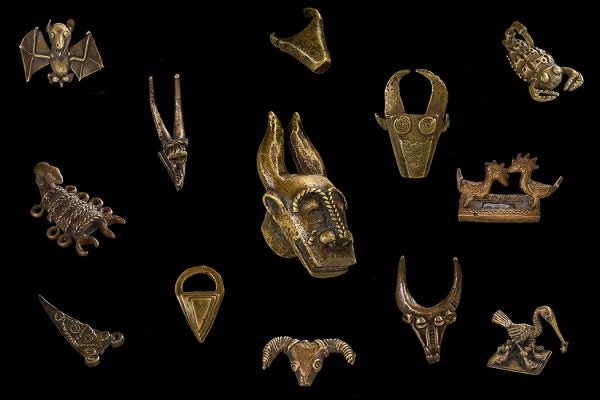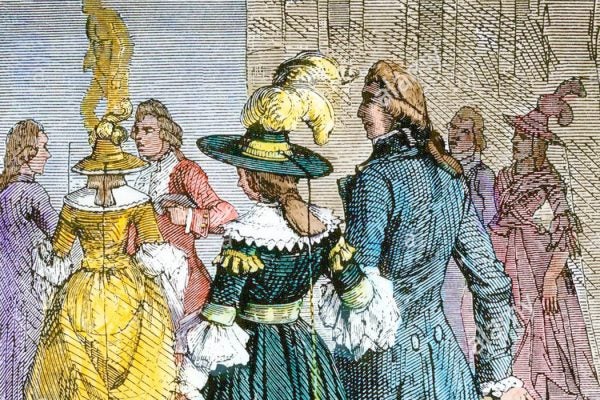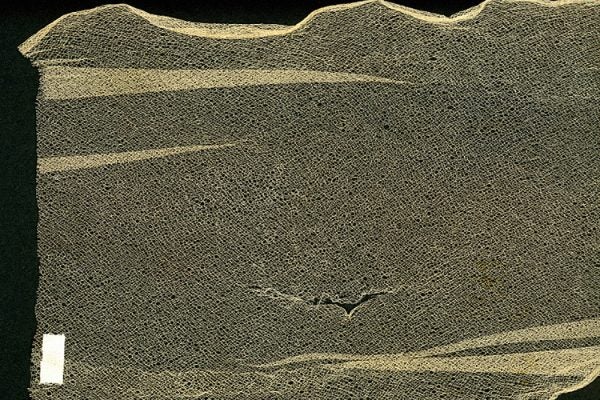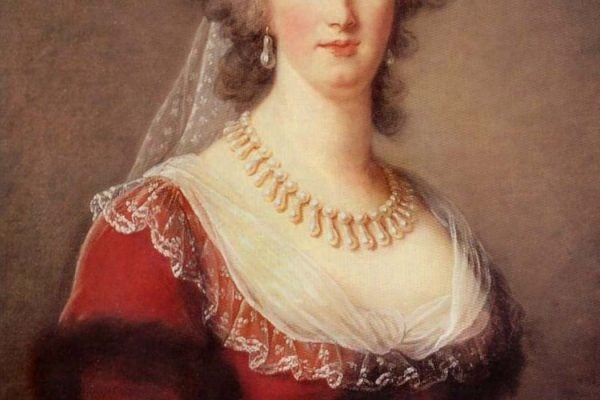Walking Streetlamps for Hire in Seventeenth-Century London
Much in the same way we hail cabs in cities today, a medieval Londoner could hail a torch-bearer (a link-boy) to light their way home from a night on the town.
A Tale of Two Times: Edo Japan Encounters the European Clock
In country that followed a time-keeping system with variable hours, the fixed-hour clock of the Europeans had only symbolic value.
Keeping Time with Incense Clocks
As chronicled by Chinese poet Yu Jianwu, the use of fire and smoke for time measurement dates back to at least the sixth century CE.
Gold Weights and Wind Scales in the Asante Empire
The ornamented tools used to ensure fair market transactions also conveyed the stories and values of the Akan peoples.
Paintings Made of Stone
Renaissance painters incorporated the inherent qualities of stone to produce works of art that revealed the beauty of nature and hand of God.
Electrical Fashions
From the light-bulb dress to galvanic belts, electrified clothing offered a way to experience and conquer a mysterious and vigorous force.
Lacebark as a Symbol of Resilience
For the enslaved people of Jamaica, the lacebark tree was a valuable natural resource and a means of asserting one's dignity.
The Drama of Point d’Alençon Needle Lace
In its heyday, lace was beautiful, expensive, and handmade. Naturally, lace smuggling became the stuff of legend.
Hot Air Balloon Launch Riot!
In the early days of ballooning, launches were prone to failure. When failure looked imminent, the crowd’s mood would begin to turn.
The Cabarets of Heaven and Hell
In 1890s Paris, cabarets in bohemian Montmartre gave visitors a chance to tour the afterlife.


